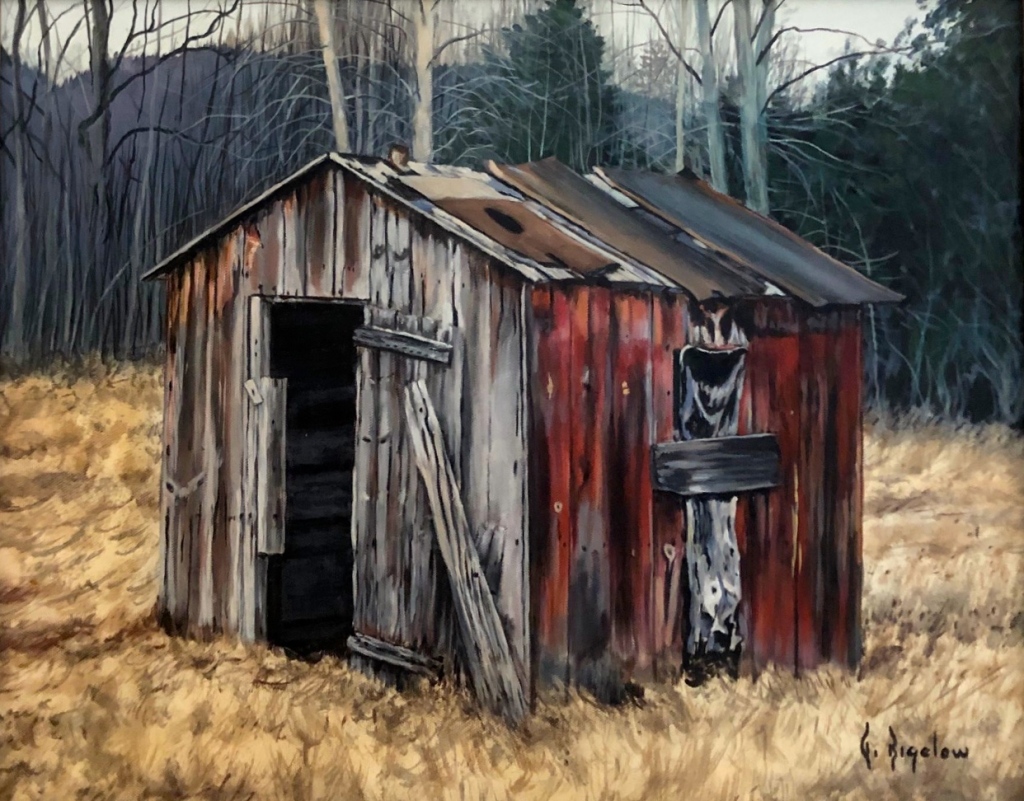
Bigalow Hill, Moriah, New York (today with a Westport mailing address),was first settled by Joseph Bigalow and Catherine Chilcott Bigalow over two hundred years ago. Joseph was born in Clarendon, Vermont in 1787 and Catherine on May 16, 1794 perhaps in Vermont, though some sources suggest the Chilcott’s were from New Jersey.


Joseph was a descendant of John Biglo and Mary Warren Biglo of Watertown, Massachusetts. Both born in Suffolk County, England, having crossed the Atlantic Ocean with the Winthrop fleet in the Summer of 1630 during what is known as the first of the Great Migration. Their marriage was the first recorded in the Watertown Town Records on August 30, 1642 where John was a blacksmith, and is recorded as being a soldier in both the Pequot War of 1636 and King Philips War of 1675. He became a freeman on April 18, 1690 at the age of 73. Mary was a lineal descendant of William the Conqueror. Levi Gould’s “Ancient Middlesex” proclaims “that the mixing of her regal blood with that of the illiterate blacksmith of Watertown has created the highest type of liberty-loving, God-fearing citizenry throughout America.” After Mary’s death John married Sarah Bemis on October 2, 1694. He died at the age of 86 years on July 14, 1703.

Joseph was a shoemaker and in later life a farmer. He and Catherine had fourteen children, several whom died young. The 1850 census shows Catherine living on Bigalow Hill with her son Amos, while Joseph, age 65 at the time, had moved west to his son Oscar’s home in Tomah, Wisconsin. It is believed Catherine did not make the move west because of poor health. She died on November 19, 1856 and is buried at Stevenson Cemetery approximately one mile from the Bigalow Hill family farm alongside today’s Route 9N. Joseph died in Tomah, Wisconsin in 1859. It is of interest that during the Civil War Amos Bigalow joined Company H, 5th Regiment, New York Cavalry which formed in Crown Point, N.Y. in 1861 while brothers Hiram O. “Bucko” Bigalow and Daniel W. Bigalow joined the Union cause in Wisconsin. Hiram in 1861 with the 10th Regiment, Wisconsin Volunteers and near the war’s end Daniel W. with the 49th Regiment Wisconsin Infantry.


John W. Bigalow



Son John W., born January 4, 1818 bought out his siblings share of the Bigalow Hill farm, marrying Maryetta Fish in 1842 and had eight children. John served as the Overseer of Highways in 1829 and Pathmaster in 1832, 1840, 1841 and 1844. A vocation that continues with his descendants to this day. They too, are buried at the Stevenson Cemetery.








His son Frank M. Bigalow, born July 25, 1856 and wife Irene Noll Bigalow, born September 2, 1859 bought his siblings share of the farm and raised a large family of fifteen children – ensuring plenty of help with the daily tasks of hard scrabble farming, lumbering and hauling timber.

Their children John A. and young sister Ruth lived on the farm until the end of their days, dying February 6, 1976 and September 19, 1991 respectively. They, like their mother and father, are also buried at the Stevenson Cemetery.


Galen Edward Bigelow inherited the Bigalow Hill property upon Ruth’s death. By this time it had fallen into disrepair, with the ancient barns toppling on the 100+ acres well into the early 2000s. The old farm house, with its’ slate roof and rough-hewn log timber frame still stubbornly stands having faced over two centuries of brisk, Northern winter winds. Many of his paintings document the crumbling and decay of the property.





